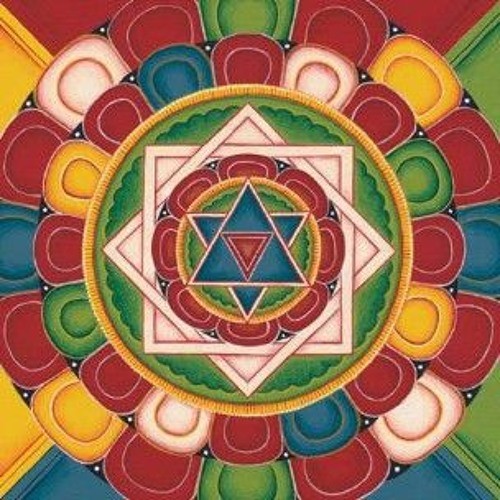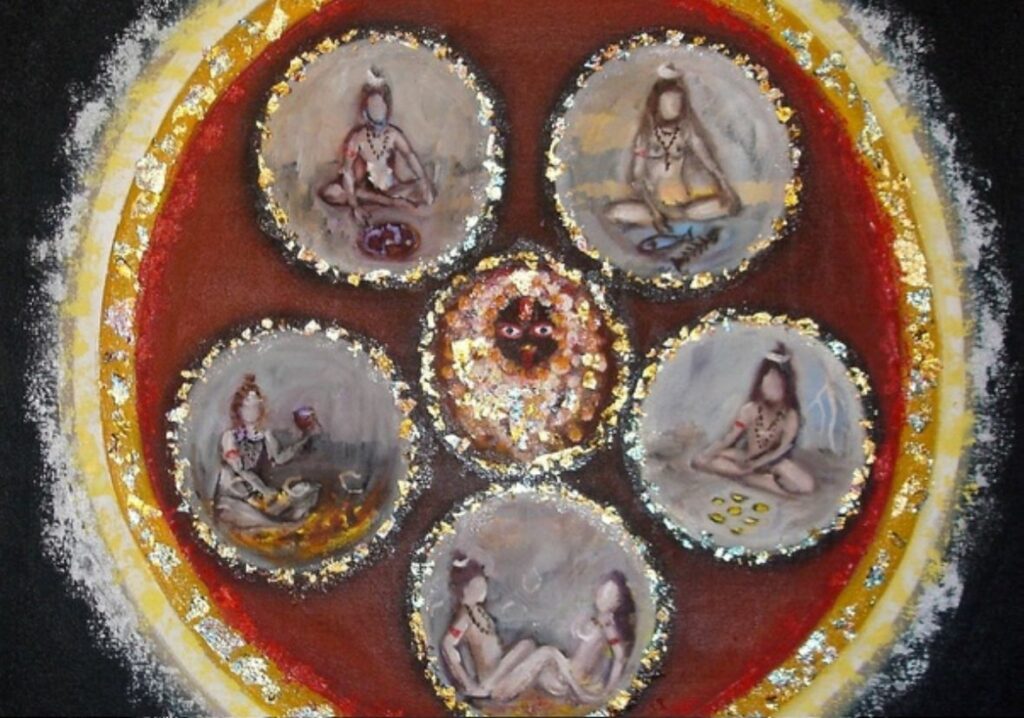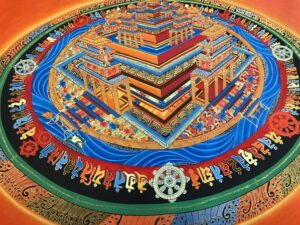
The overarching purpose of Tantra is freedom; freedom from self-imposed limitations and the veils that are draped over your consciousness, inhibiting, masking your potential. Tantra is a means to freedom through ultimate clarity – a freedom to do what you do and be who you are.
We are surrounded by a vast array of influences every day, influences that limit our perception and awareness, ironically due to the very stimulation and sensual abundance they offer.
These influences come to us via the five great elements that form the manifest universe viz. earth, air, water, fire and ether. If one is able to purify these elements within oneself, one may be freed of their unconscious influence and thus tame them, learn to live in harmony with them, use them towards conscious operation and co-operation with the Greater Nature – call that God or Goddess or Total Reality, it makes no difference. Tantra is not religion. It is a way of life.
To be free of the attachment to sanskaras, influences or impressions, is to be a purified vehicle in which Kundalini may rise unimpeded. Like a channel through which water flows, when it is obstructed with filth, decades of stagnant algae growth or unnatural pollutants, the water itself will grow poisoned and unfit for life. Otherwise the waters will overflow their banks and spill out seeping into the mud. Similarly the energy or life force that is Kundalini may also grow decrepit and spill out into the body causing anger or malaise. Otherwise she may be forever forced into lower-self-identification, never realizing Her full potential to reach and merge with the great ocean.
Real Yoga, real Tantra means Bhuta Shuddhi and every ritual use of the elements to worship Maa Shakti is with the aim of purifying those very same elements within you. For instance, when we worship with flower, scent or flame, we are appealing simultaneously to both physical and metaphysical forces. Indians like to call these metaphysical forces devas, or asuras – deities; they are easier to relate to when a face is put to them. Self-identification becomes relatable before it is intuited in the great silence of the various levels of Samadhi.
Ritual purification, according to the Tantrik way, is undertaken at the level of each element, understood as the five M’s – mamsa, matsya, mudra, madira and maithuna. In general parlance they are translated as meat, fish, grain, wine and sexual union. In the Kali Yuga, however, this seems to have created an image of great Dionysian orgies of the senses; alas, the point has been lost. As if to partake of the body of Christ during Holy Communion in the Christian church could ever be equated to cannibalism! Well, the Aghoris know better, even if common folk who like to indulge in rumor and entertain with legend do not.

The M’s are representatives of the elements; we must use in our worship that what the universe has given to us. Simple, but not so simple. It is liberation through the tools of bondage, using that which would enslave you to break free of the bonds by consciously stimulating the movement of Kundalini. This is a purification rite only, a means to an end and not the end itself. This is where many get lost, in addiction, gluttony, lust and so on. It is not that the ego and attachments must be destroyed; it is that an agreement must be come to. You yourself must come to understand who is in control of the you of lower-self-identification and its powerful tool called mind.
Still, the rites must be performed properly and precisely. At the feast of Bacchus, was there ever a Roman to take the ritual past the physical and truly propitiate the God within, or without? Wherein a little alcohol, madira, may be used to ignite the appetite, stimulating the blood flow, filling the brain with energy and preparing the body for the awakening of Kundalini, surely only the fewest of the few used their wine to this purpose and intent. Taken a step further, who these days takes their ritual beyond the physical from the outset, turning to the spiritual apprehension of the elements? Here, meat is no longer meat, but is represented only by the tongue and worshipped through the ritual of silence. A yogi understands that matsya is the breath and mudra the gesture, while madira is that nectar excreted by the glands in the brain and maithuna the very union of the God and Goddess Themselves at Sahasrara.
There are several variants of the ceremony, often called Chakra Puja, in which the yogin, or aspirant to higher consciousness, will undertake the sadhana of cleansing the five elements. These variants correspond to the predominant guna of the individual. There is a sattvic, tamasic and rajasic approach depending on the proclivity and disposition of the initiate. But for all there can be said to be one overarching truth, which if realized early, will be of great help in the work going forward. That is the state of innocence which one enjoyed before becoming embroiled in the affairs of sex. Without such distraction, Samadhi is a potent tool of focus affording one great power of determination and creation. But see the inclination to sex, how it can break even the strongest concentration. The Indians have great myths about this topic, such as that of the penance of Sage Vishwamitra. But that is neither here nor there now. Kali Yuga is what it is. We are what we are on our various stages of development. Kriya and Tantrik Sadhana are undertaken from our immediate position – it is not impossible to attain the goal!
Truly, this idea of innocence is one that needs to be looked into with all due seriousness. It is the lynchpin, the realization that might serve as the integral pillar of one’s entire practice.

…is a Saiva Tantrika, Gyana Yogi and founder of Uma Maheshwara Yoga & Ayurveda. David has an MA in Semiotics, lives in Japan with his family and works as a coach in L & D, devoting his time to developing science-based tools and programs that help people reach the fullest potential of the human condition.
Discover more from REAL YOGA
Subscribe to get the latest posts sent to your email.









